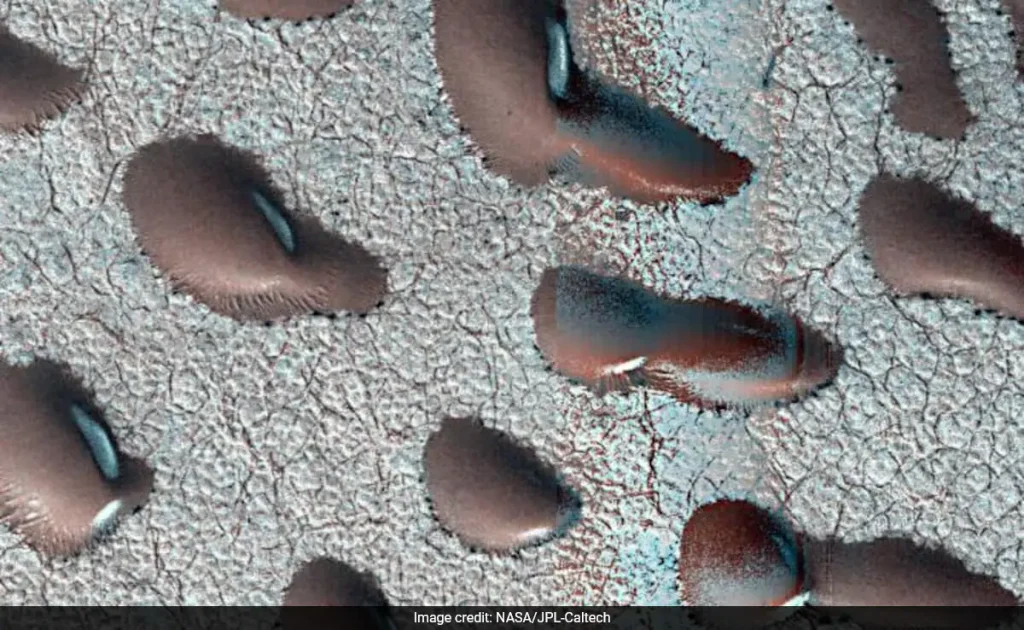Mars, a world of striking contrasts and alien beauty, continues to captivate scientists with its icy mysteries. Among its most intriguing features are frozen dunes, captured in stunning detail by NASA’s Mars Reconnaissance Orbiter. Blanketed in a delicate frost of carbon dioxide, these dunes remain immobile through the harsh Martian winter, offering an extraordinary window into the planet’s ancient climate and potential to harbour life.
In 2022, NASA’s orbiter revealed images of dunes in Mars’ northern hemisphere locked beneath a winter frost. Unlike Earth’s restless deserts, where wind constantly reshapes the landscape, the icy embrace of carbon dioxide stills these Martian dunes. The frost forms a rigid barrier, halting the grains’ migration until the warmth of spring causes it to sublimate directly into gas, setting the dunes free once more.
Clues to Water and Life
While the frost is composed of carbon dioxide, not water, it provides vital clues about Mars’ climatic past. The planet’s axial tilt, far more variable than Earth’s, drives dramatic shifts in seasonal patterns over millennia. During periods of increased tilt, Mars may have developed a denser atmosphere, creating conditions favourable for liquid water to exist on its surface. Such periods raise the possibility that life, perhaps microbial, might have thrived in these fleetingly hospitable environments.
Tracing Mars’ Climate Evolution
The study of frost-covered dunes is more than a snapshot of current conditions, it’s a time machine revealing Mars’ climatic history. By analysing the cycles of carbon dioxide frost and the seasonal transformations it triggers, researchers hope to piece together the story of the planet’s environmental evolution. If signs of prolonged liquid water emerge, they will bolster the case for Mars as a once-habitable world.
The frozen dunes of Mars are more than just a striking feature of the Martian landscape; they are a key to unlocking the Red Planet’s secrets. As scientists delve deeper into these icy enigmas, they inch closer to answering one of humanity’s most profound questions – Are we alone in the universe, or has a life also found a way to flourish on our crimson cosmic neighbour?


